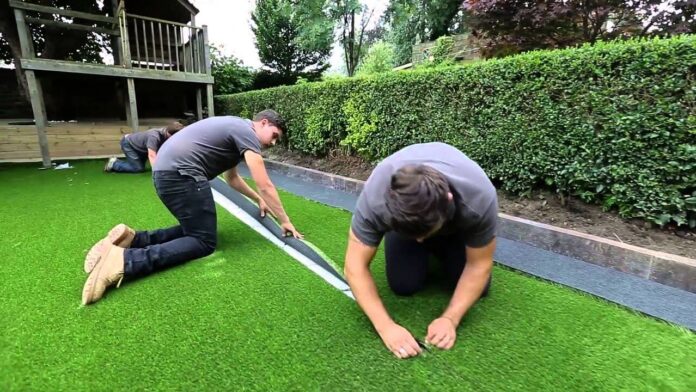Artificial grass doesn’t require mowing, irrigation, seeding, chemicals, and clippings. The turf also resolves the issue of mud and dead spots. Artificial turf must be installed properly to achieve these benefits. All you need is quality artificial turf designed for your application.
Here are seven steps involved in professional artificial lawn installation:
Outlining Project
Installing artificial grass begins with measuring and examining the lawn to outline project requirements like turf size, excavation, tools, and budget. Look for experienced, reputable, and licensed artificial turf suppliers and installers and compare their products. Turf installation involves a few basic steps and can be completed on the same day if well-planned.
Preparing the Sub-base
Pre-installation involves preparing the sub-base for the application. The lawn may require excavation, cleaning, and perimeter defining. Excavation removes the top layer to create room for a compact base on which the turf is installed. Consider rough-grading the land and removing sprinklers, wires, and pipes to shape the ground and prepare it for base installation.
Adding the Base
Sub-base refers to the ground, while the base is the coarse foundation on which the turf is laid. Artificial turf needs a smooth and even base to support the application. Installers determine the proper depth for the road base, which can be crushed granite, gravel, limestone, or other granulated stone. The base is added to the excavated sub-base to create a flat surface.
Compacting Base
Artificial turf road bases are then compacted to provide a hard, smooth, even surface with defined edges. Compaction involves a vibrating tool that packs the ground tightly. Installers use heavy-duty rollers or compactors to flatten the road base into an even, rigid surface ready for turf installation. Consider double compaction to keep irregular aggregates from loosening and piercing through the turf.
Applying a Weed Barrier
Artificial turf installers can apply a weed barrier if weeds are a problem in your lawn. The process involves adding a special woven landscape fabric on the compacted base to prevent weeds from sprouting through the turf. Landscape fabric is made of polypropylene or linen. Installers secure the barrier using nails. Installers can also apply organic weed killers before adding the barrier.
Fitting & Tucking
Fitting artificial turf involves measuring the lawn several times to make sure you have the right length of turf. Installers put the artificial turf in place and tuck the edges. Installers use metal wonder bars to secure the turf with nails and fold the edges against existing hardscapes or borders. The goal is to create a clean, flat surface without creases.
Applying Lawn Filler
Adding synthetic turf infill helps to keep the blades upright and weight to the turf. Popular fillers include sand, rubber, TPE, cork, and walnut shells. You can also use antibacterial filler, which makes playgrounds safer for kids and pets. Installers use a power brush to lift the blades and apply the infill. The last step is power brushing to groom and create a healthy-looking lawn.
Read Also: How To Properly Size Your AC Unit
Working With Artificial Grass Installers
Working with a licensed company is one of the best ways to install artificial grass on playgrounds, pet areas, putting greens, and lawns. Choose reputable, long-serving companies that offer quality artificial turf and installation services. Review the turf quality and look for durable options designed to look and feel like natural grass.


